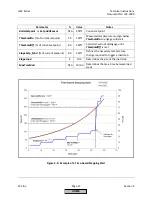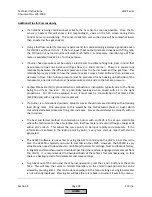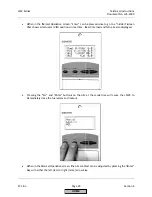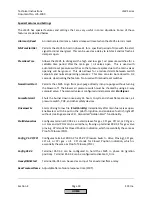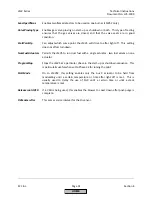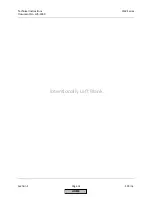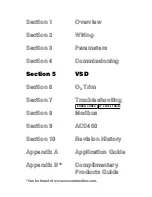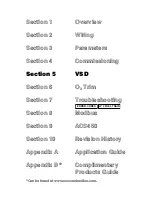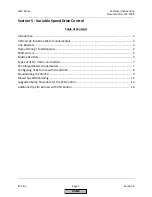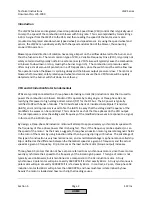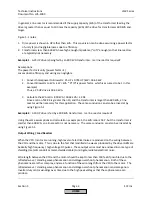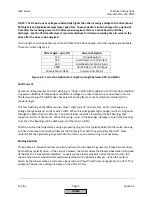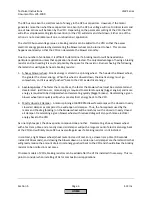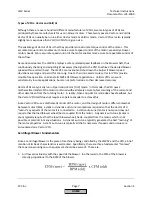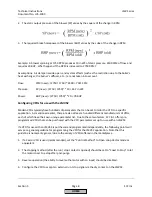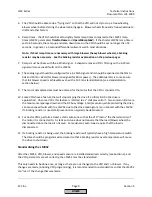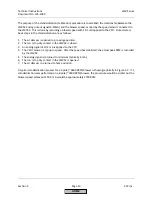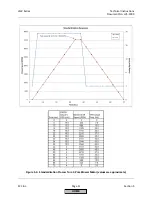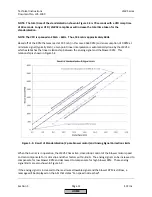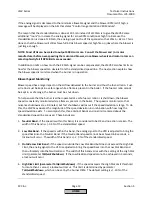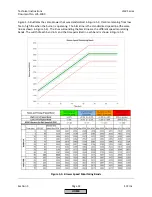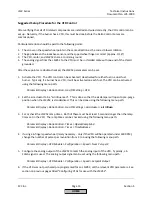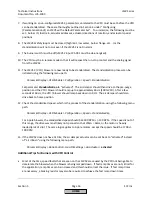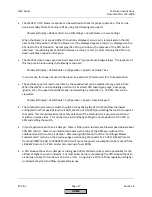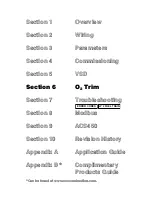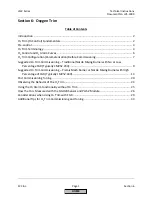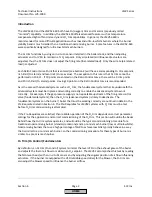
LMV
Series
Technical
Instructions
Document
No.
LV5
‐
1000
SCC
Inc.
Page
7
Section
5
Types
of
VFDs:
Vector
and
Volt/Hz
Although
there
are
over
a
hundred
different
manufacturers
of
VFDs,
two
main
types
of
VFDs
are
produced
by
these
manufacturers
for
use
on
blower
motors.
These
two
types
are
Vector
and
Volt/Hz.
Vector
VFDs
can
usually
be
run
in
either
Vector
mode
or
Volt/Hz
mode.
Vector
VFDs
are
also
typically
slightly
more
expensive
than
Volt/Hz
VFDs
for
a
given
size.
The
advantage
of
Vector
VFDs
is
that
they
provide
more
accurate
torque
control
of
the
motor.
This
accurate
torque
control
enables
much
more
accurate
speed
control
of
the
motor,
especially
at
lower
motor
speeds.
More
accurate
speed
control
of
the
motor
enables
more
accurate,
repeatable
control
of
the
airflow.
As
mentioned
earlier,
the
LMV52
employs
a
safety
‐
related
speed
feedback
on
the
blower
shaft,
thus
continuously
checking
and
adjusting
(if
necessary)
the
signal
to
the
VFD
to
achieve
the
desired
blower
speed
within
a
certain
band.
The
LMV52
can
lockout
and
shut
down
the
burner
if
blower
speed
deviations
are
large
and
persist
for
too
long.
Due
to
their
increased
accuracy,
Vector
VFDs
provide
trouble
‐
free
operation
on
almost
all
LMV52
VFD
blower
applications.
Volt/Hz
VFDs
can
work
satisfactorily
in
some
applications,
but
are
not
preferred
due
to
their
decreased
accuracy.
Vector
VFDs
are
typically
run
in
Open
Loop
Vector
(OLV)
mode.
In
this
mode,
the
VFD
uses
a
mathematical
model
of
the
motor
combined
with
extremely
accurate,
fast
scanning
of
the
current
and
other
data
taken
from
the
rotating
motor.
In
reality,
Open
Loop
Vector
mode
does
have
feedback,
but
the
Vector
VFD
itself
does
not
require
a
separate
encoder
to
achieve
this.
Since
Vector
VFDs
use
a
mathematic
model
of
the
motor,
and
the
design
of
motors
differs
somewhat
between
motor
OEMs,
a
static
or
dynamic
auto
‐
tune
is
sometimes
required
so
that
the
Vector
VFD
"learns"
key
aspects
of
the
motor
it
is
connected
to.
A
static
auto
‐
tune
(motor
is
not
spun)
does
not
require
that
the
load
(blower
wheel)
be
de
‐
coupled
from
the
motor.
A
dynamic
auto
‐
tune
(motor
is
spun)
typically
requires
that
the
load
(blower
wheel)
be
de
‐
coupled
from
the
motor,
which
is
not
possible
or
practical
in
many
situations.
A
dynamic
auto
‐
tune
typically
generates
the
best
"learning"
of
the
motor
properties.
A
static
auto
‐
tune
is
typically
all
that
is
necessary
if
speed
control
issues
are
encountered
on
a
Vector
VFD.
Centrifugal
Blower
Fundamentals
Since
a
centrifugal
blower
is
the
piece
of
machinery
being
controlled
by
the
LMV52
and
the
VFD,
a
brief
mention
of
its
basic
characteristics
is
warranted.
Specifically,
there
are
three
fundamental
"fan
laws"
that
a
person
working
on
such
equipment
should
be
aware
of.
These
are:
1.
Air
flow
varies
linearly
with
the
speed
of
the
blower.
In
other
words,
the
CFM
of
the
blower
is
directly
proportional
to
the
RPM
of
the
blower.
HOME
Summary of Contents for LMV 5 Series
Page 2: ...Intentionally Left Blank ...
Page 41: ...LMV Series Technical Instructions Document No LV5 1000 SCC Inc Page 7 Section 2 HOME ...
Page 42: ...Technical Instructions LMV Series Document No LV5 1000 Section 2 Page 8 SCC Inc HOME ...
Page 43: ...LMV Series Technical Instructions Document No LV5 1000 SCC Inc Page 9 Section 2 HOME ...
Page 44: ...Technical Instructions LMV Series Document No LV5 1000 Section 2 Page 10 SCC Inc HOME ...
Page 45: ...LMV Series Technical Instructions Document No LV5 1000 SCC Inc Page 11 Section 2 HOME ...
Page 46: ...Technical Instructions LMV Series Document No LV5 1000 Section 2 Page 12 SCC Inc HOME ...
Page 47: ...LMV Series Technical Instructions Document No LV5 1000 SCC Inc Page 13 Section 2 HOME ...
Page 48: ...Technical Instructions LMV Series Document No LV5 1000 Section 2 Page 14 SCC Inc HOME ...
Page 49: ...LMV Series Technical Instructions Document No LV5 1000 SCC Inc Page 15 Section 2 HOME ...
Page 50: ...Technical Instructions LMV Series Document No LV5 1000 Section 2 Page 16 SCC Inc HOME ...
Page 51: ...LMV Series Technical Instructions Document No LV5 1000 SCC Inc Page 17 Section 2 HOME ...
Page 52: ...Technical Instructions LMV Series Document No LV5 1000 Section 2 Page 18 SCC Inc HOME ...
Page 53: ...LMV Series Technical Instructions Document No LV5 1000 SCC Inc Page 19 Section 2 HOME ...
Page 54: ...Technical Instructions LMV Series Document No LV5 1000 Section 2 Page 20 SCC Inc HOME ...
Page 55: ...LMV Series Technical Instructions Document No LV5 1000 SCC Inc Page 21 Section 2 HOME ...
Page 373: ...Intentionally Left Blank ...

